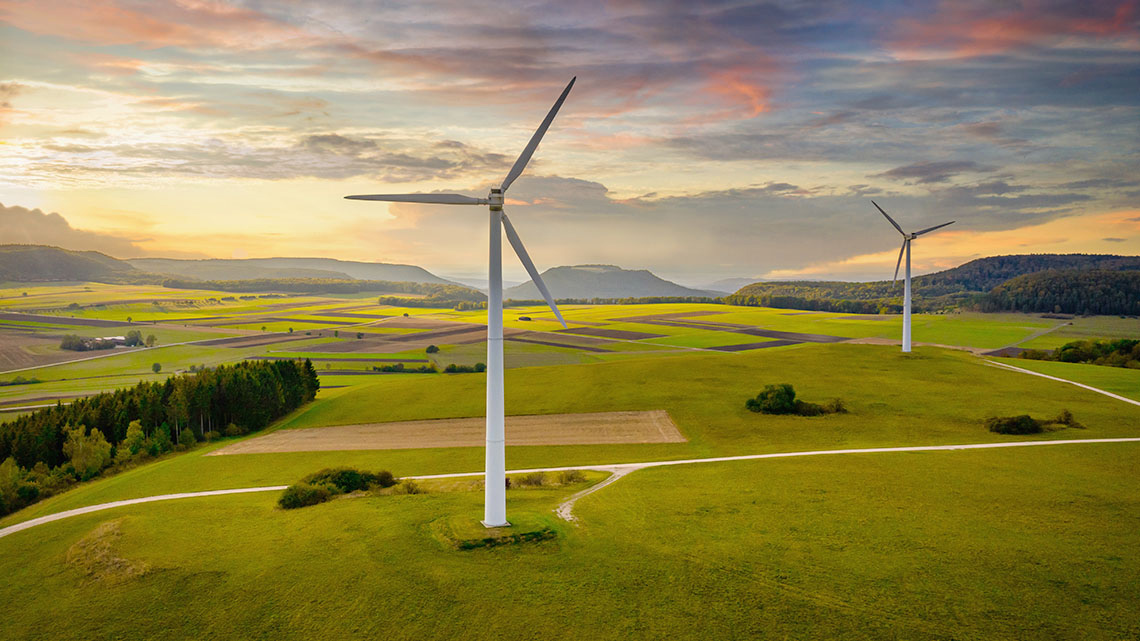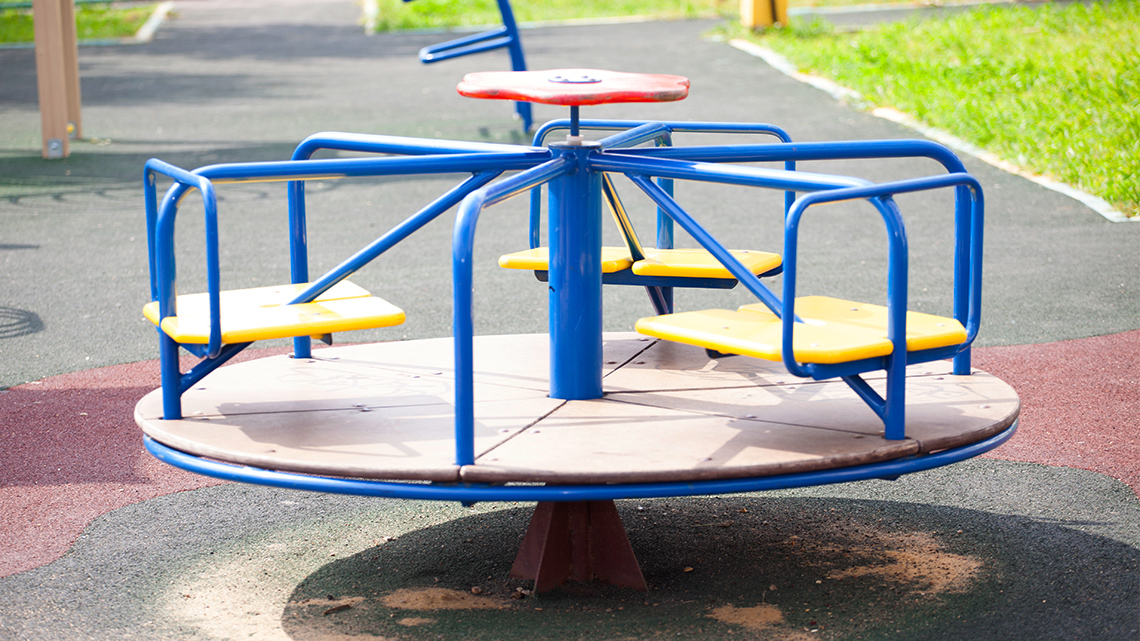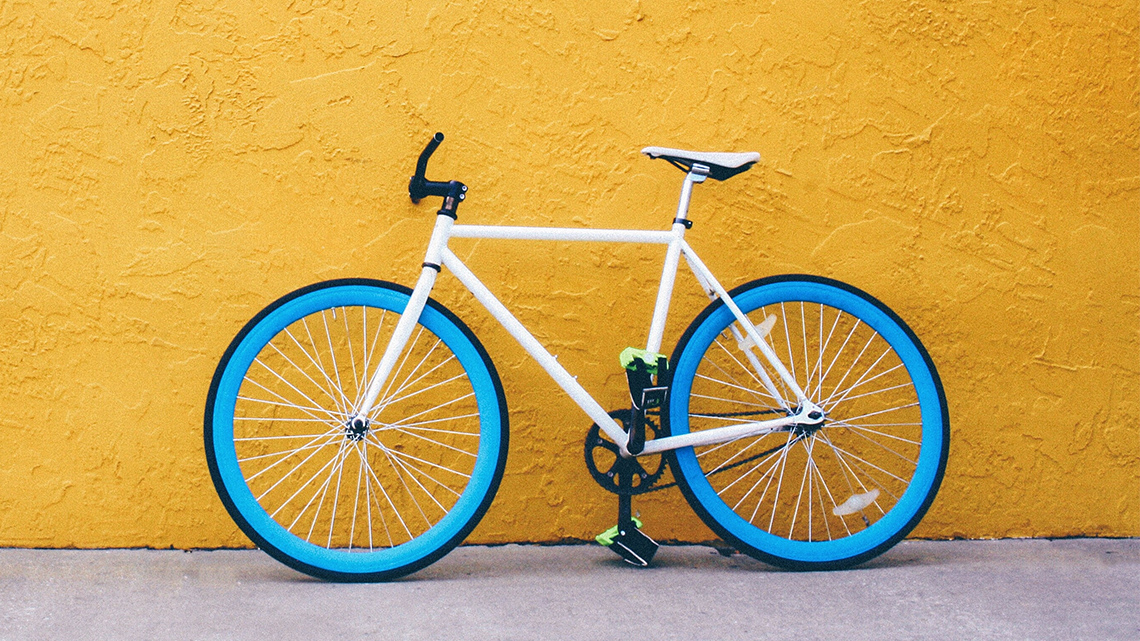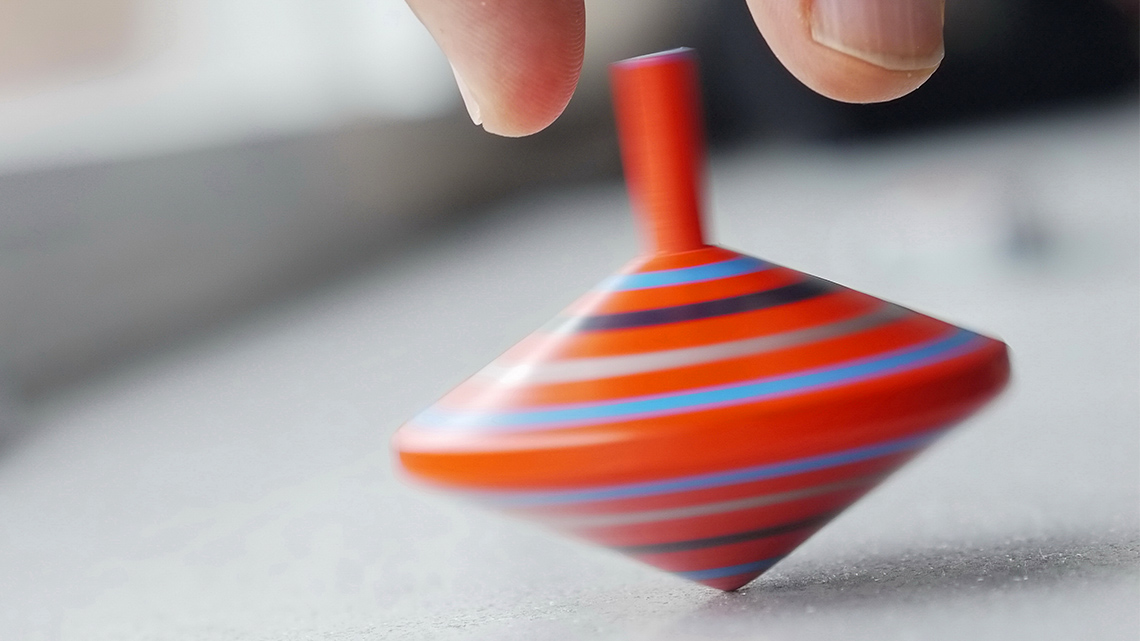Minds On
Observe the motion
Explore the following images. What do they have in common? Record your thinking in a method of your choice.
These are all examples of objects that spin or rotate. They move with rotary motion.
Can you think of other objects, tools, or devices in your home or local community that spin or rotate? Record your ideas in a method of your choice.
Action
Use the force!

A force is the push or pull that is applied to an object to make it move. A force moves an object by making it speed up, change shape, or change its direction or position. Depending on the object that needs to be moved, a lot of force might be needed to move it!
Brainstorm
Think about it

Consider the task of needing to lift a very heavy box up and onto the back of a truck. This would take a lot of force and effort.
Can you think of a way to make the task of getting the heavy box onto the truck easier for the person?
Press ‘Hint’ to access some information to help you answer this question.
Lifting a heavy item requires a lot of force and effort, but sliding a heavy object doesn’t use as much force! How could you slide the box onto the truck?
Simple machines were invented to make tasks easier by helping move objects with less force. With a simple machine, a person doesn’t have to push or pull as hard to move an object, meaning it takes less effort and less force!
There are six types of simple machines:
- lever
- wedge
- wheel and axle
- screw
- inclined plane
- pulley
Explore the following animation of the simple machines in action.
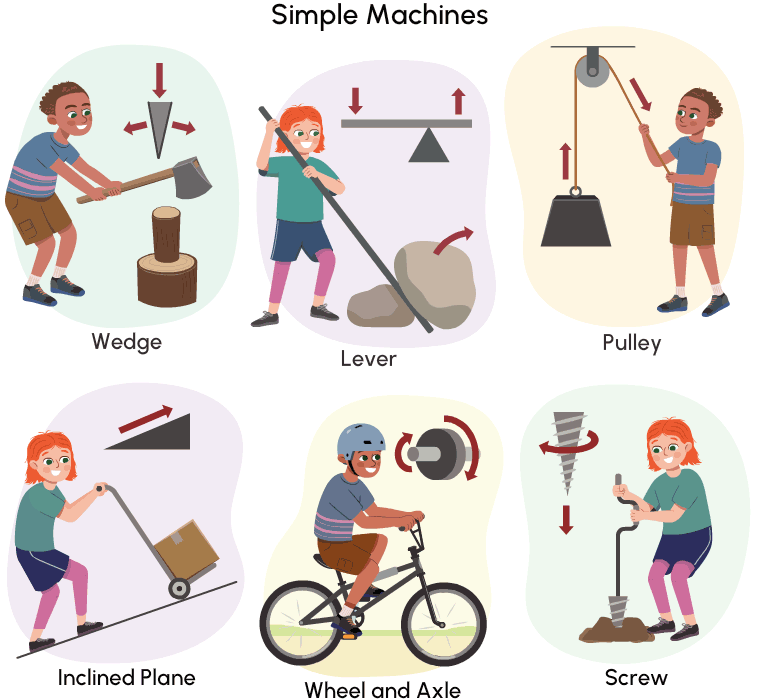
These animations show how the six different simple machines are used to move objects. There are arrows to represent how the force is being changed. The wedge is an axe. There is a child holding an axe and cutting wood. The force of moving the axe down into the wood moves the force down and outward from the wood., The lever is a long pole. A child is holding the pole. One end of the pole is underneath a big rock. The force of pushing down on the pole lifts the rock upwards. There is a child holding one end of a rope that is moving through a pulley. At the end of the role is a heavy weight. As the child pulls down on the rope, the weight is lifted up. The inclined plane is a ramp. A child is pushing a box up the ramp on a cart. As the child pushes the cart, the cart moves up the ramp. The wheel and axles are on a bicycle. A child is riding the bicycle. As the child pushes their feet on the pedals, the wheels turn around. The screw is a long tool used for digging into the ground. A child is turning the screw, and the screw is moving around and down into the ground.
Check your understanding!
For each question, select the correct answer, then press “Check Answer” to see how you did.
Student Success
Apply your learning
Choose one of the examples of simple machines, and explain how you think it allows a person to use less force, and makes the task easier to perform.
Types of motion
Motion describes how the position, speed, or direction of an object changes over time. Simple machines are mechanisms that use force to move objects in different ways.
Press ‘Definition’ to access an explanation of what the word mechanism means.
A mechanism is a group of different parts that work together to perform a specific task in a machine.
The gears in a clock are an example of a mechanism because they work together to move the hands on the clock to display the time.
Let’s learn about two different types of motion: motion transmission and motion transformation.
Motion transmission
To transmit means to pass or move something from one place to another. Some mechanisms transmit motion from one place to another.
When something transmits motion, it moves energy from one place to another without changing the type of movement. Objects that move round and round, or back and forth, are examples of motion transmission.
Rotary motion (which we explored in the Minds On section), is an example of motion transmission. In rotary motion, an object spins round and round, or rotates around an axis. The type of movement stays the same and does not change.
Motion transformation
To transform means to change. Some mechanisms transform motion from one type to another, and change the speed or the direction of the movement.
When an object transforms motion, it changes the type of motion from one form to another (e.g., rotary motion to linear motion). This is called motion transformation.

One example of motion transformation is a glue stick. When the bottom of the glue stick is rotated, the type of motion is transformed from rotary (round and round) to linear (up and down).
Learning check!
Let’s learn more about how mechanisms and movement work together!
Rotary motion and gears
Gears belong to the group of simple machines called the wheel and axle. Gears are specialized wheels and axles because they have small grooves all around them called teeth and they fit together like moving puzzle pieces! Gears are an example of rotary motion mechanisms because they spin round and round, and rotate around an axis.
To examine gears in action, explore the following video of the five internal gears of an engine moving together:
Gears can be different sizes. Some gears have many teeth, and some gears have a few. They always move together in opposite directions. Gears are examples of motion transmission systems because they transmit motion by using force to change the direction or speed of the object.
Check out this Science North video to experience gears in action:
Learning check
Brainstorm
All about gears
In your notebook, or using another method of your choice, record four to five (4-5) facts about gears that you have learned so far.
Can you think of examples of objects in your home or local community that move with gears? Make a list using a method of your choice such as in print, digitally or with an audio recording.
Press ‘Hint’ to explore some facts to help guide your thinking.
Facts about gears:
- Gears are simple machines.
- They are specialized wheels and axles with teeth.
- Gears are examples of rotary motion mechanisms.
- Gears can be different sizes and have different numbers of teeth.
- Gears can transform the type of motion, the direction of movement, or the speed of movement.
- Gears can fit together in a gear train, which is an interlocking system.
- In a gear train, each gear moves in the opposite direction from the gears next to it, and if the gears are different sizes, they will move at different speeds.
- The smaller gears rotate more quickly and more often than the larger gears.
- Gears can be found in watches/clocks, egg beaters, bicycles, drones, and motor vehicles.
Motion transmission system
A gear train is a group of different gears that work together to create motion. Gear trains are an example of a motion transmission system.
There are three parts of a motion transmission system:
- Driver: begins the motion when force is applied
- Driven: receives the motion
- Intermediate: transmits the motion, links the driver and the driven
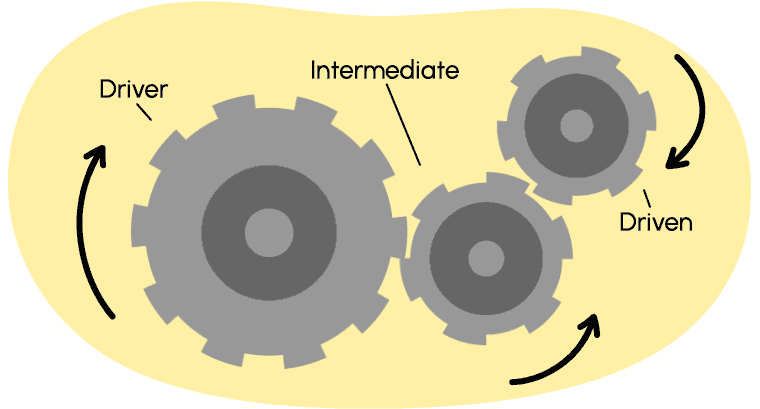
How does it work?
When force is applied to the driver, the gear begins to rotate in one direction. The speed of the motion is determined by the force applied to the driver.
The intermediate is connected to the first gear. It rotates in the opposite direction and transmits the motion to the driven.
The driven is the third gear and is connected to the intermediate. It receives the motion and rotates in the same direction as the first gear.
Your turn!
Label each of the different parts of the motion transmission system and describe how each part of the gear train moves.
Complete the “Gear Train Diagram” in your notebook or using the following fillable and printable document. If you would like, you can use speech-to-text or audio recording tools to record your thoughts, or another method of your choice.
|
Label the following diagram of a gear train: |
|---|

|
|
Describe how the gear train works using scientific vocabulary. Be sure to explain the directions of the different moving parts. (Blank) (Blank) (Blank) |
Press the ‘Activity’ button to access Gear Train Diagram.
Future impacts
This learning activity connects new and existing approaches for young scientists to create positive changes in their communities.

Let’s meet an engineer and inventor named William Kamkwamba and learn about one example of a rotary motion mechanism, and how mechanisms and motion can have a positive impact on global communities.
Spotlight: William Kamkwamba
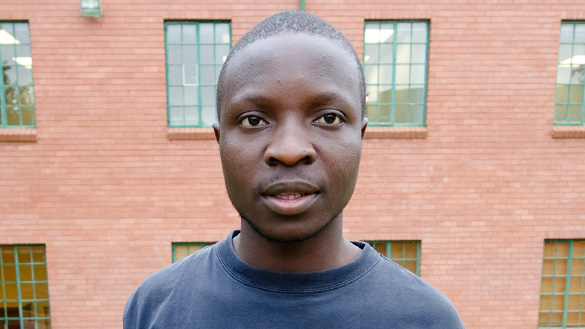
William grew up in the village of Wimbe, east of Kasungu in Malawi, Africa.
As a young boy, William always loved to learn and visited the library often. When he was 14 years old, he read a book called Using Energy. This book taught him that windmills can be used to pump water and generate electricity.
In 2001, Malawi experienced a severe drought. A drought is a long period of time with little or no rainfall. This can create a water shortage. William’s family, and many others in the village, are farmers who grow maize (corn) and tobacco. Without water, crops will not grow, and this would impact everyone in the village.
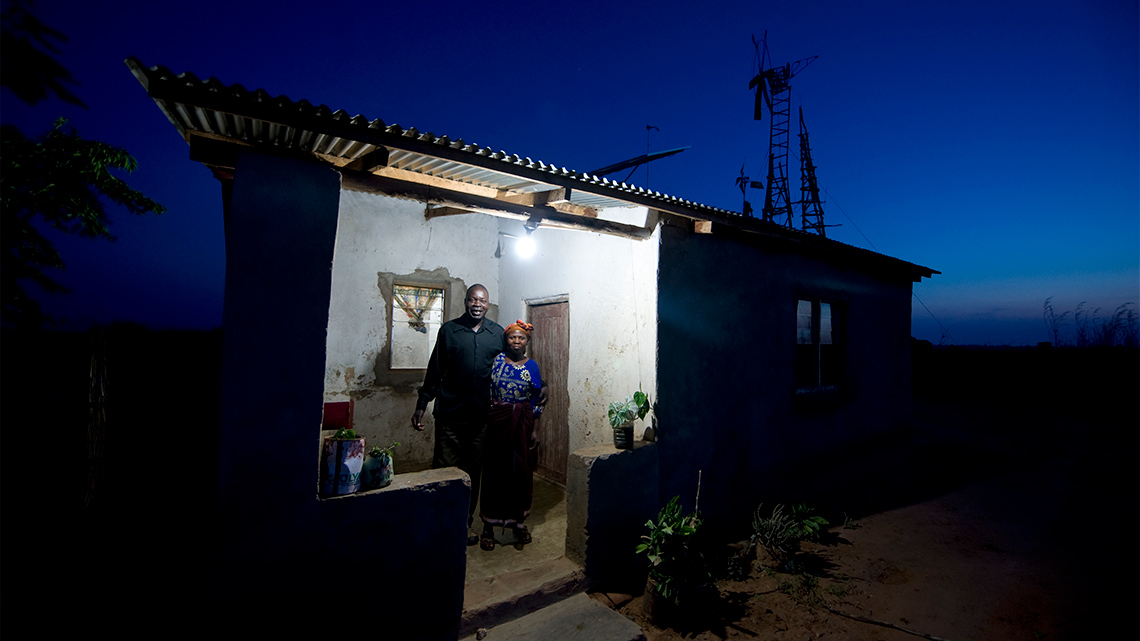
William Kamkwamba’s parents, Trywell and Agnes Kamkwamba, stand outside their home outside of Wimbe, Malawi.
Inspired by the book he read, William realized that a simple machine, the windmill, could help his community solve the problem of the water shortage.
He went to a local scrapyard to find the materials he needed. He used a recycled bicycle frame, old tractor parts, PVC pipes and a bicycle generator to build his first windmill.

Kamkwamba’s cousin Gift climbs one of the windmills on the family farm in order to release the vanes.
When William tested his windmill, it was able to generate enough electricity to power four lightbulbs and even power a radio!
William continued to use his knowledge and learning to build a solar powered water pump to supply water for his village. He also built two more windmills to generate power.
William Kamkwamba has inspired many people. His story has been published as a children’s book and produced as a movie called, “The Boy Who Harnessed the Wind”.
Check out the following video to learn more from William Kamkwamba himself:
Let’s build!
We can learn more about simple machines by designing a tool, object, or device that includes rotary motion. Use what you have learned in this activity, and your own ideas to design a Rotary Motion Machine that could make a task easier and require less effort and force.
Before you begin, check out the following video to learn more about the Engineering Design Process that will help guide you as you plan your design.
There are many steps to the Engineering Design Process. We will focus on the following steps:
- Ask: What do I know about simple machines and rotary motion? How will this machine create positive changes in local or global communities?
- Brainstorm: What type and how many simple machines will I include? How will the object, tool, or device move?
- Plan: What is my plan? What equipment or materials do I need? Will the tool, object or device require someone to provide force in order to move?
Complete the Rotary Motion Machine activity in your notebook or using the following fillable and printable document. If you would like, you can use speech-to-text or audio recording tools to record your thoughts.
|
Ask: What do I know about simple machines and rotary motion? How will this machine create positive changes in local or global communities? |
Plan: What will your design look like? Create a labelled diagram and record your materials with the amount you need. OR describe your design and how it will work. |
|
Brainstorm: What type and how many simple machines will I include? How will the object, tool or device move? |
Press the ‘Activity’ button to access Rotary Motion Machine.
Consolidation
Sharing our learning

Now that your rotary motion mechanism design is complete, prepare to share your creation using a method of your choice.
Consider the following questions from the steps of the Engineering Design Process:
Share:
- Will I share my design digitally, in writing, or as an audio description?
- Can I identify and describe how I used rotary motion in my design?
- Can I explain how it uses force to move?
Next Steps:
- If possible, build and test your design. If it is not possible to build your design, you can choose to describe your design and how it will work.
Putting it all together
In this learning activity, we explored different types of mechanisms and movement.
In your notebook, or using a method of your choice, answer the following questions:
- How do simple machines help to move objects? Provide three different examples and explain how they make movement easier.
- Reflect on the tool, object or device that you designed and/or the first windmill that William Kamkwamba designed. Explain how it uses force and motion. Use appropriate science vocabulary in your response.
Reflection
As you read through these descriptions, which sentence best describes how you are feeling about your understanding of this learning activity? Press the button that is beside this sentence.
I feel…
Now, record your ideas using a voice recorder, speech-to-text, or writing tool.

